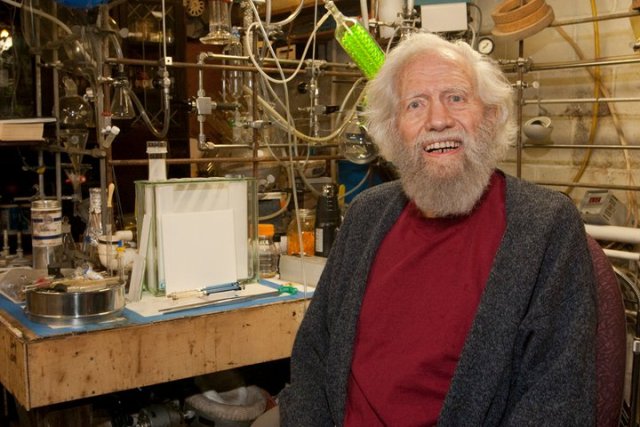
In the 18th and 19th century, scientists often used themselves as guinea pigs in the course of conducting experiments to determine the causes of disease and test the efficacy of new drugs.
One of the earlier and more heroic examples comes from the Scottish physiologist and surgeon John Hunter (1728-93). Hunter was investigating syphilis, a disease surrounded by secrecy and shame whose origins were unlikely to be acknowledged at any level. The French called it the Italian disease and the Italians called it the French disease.
In order to better understand the difference between gonorrhoea and syphilis, Hunter inoculated his own penis with the pus of a gonorrhoea sufferer. The fact that he drew something of a wrong conclusion from the experiment hardly detracts from his stalwart commitment to science.
Alexander Shulgin, who died on June 2 at the age of 88 from liver cancer, was a scientist in this tradition. Born in Russia, Shulgin served in the US Navy in World War II, gained his doctorate in biochemistry at the University of California in 1945. Thereafter he worked as a research chemist for the Dow Chemical Company.
Although he worked on successful commercial products for Dow, most notably inventing the first biodegradable insecticide, Zectran, Shulgin’s preference for research into psychedelics (he began with mescaline) led to a mutual parting of ways in 1965.
Shulgin then set up his own laboratory at his home in Berkeley where he invented a number of psychedelics and undertook groundbreaking research into two classes of mind-altering drugs, phenethylamines and tryptamines.
Together with his wife Ann, he wrote two books that detailed their work, PiKHAL: A Chemical Love Story, published in 1991, and 1997’s TiKHAL: The Continuation. Both titles are acronyms for phenethylamines and tryptamines “I have known and loved”, and reflect the fact that, in the heroic tradition, the Shulgins’ experiments were conducted on themselves.
Shulgin created and personally tested more than 200 psychedelic drugs. But the one drug he is most likely to be remembered for is methlylenedioxymethylamphetamime (MDMA), or as it is more commonly known — ecstasy.
MDMA, a phenethylamine, was first synthesised in the Darmstadt laboratories of the German pharmaceutical company Merck in 1912. But it remained in the laboratory for want of commercial application.
Nearly 40 years after it was first synthesised, the US Army began experimenting with it at the Edgewood Chemical Warfare facility in Maryland in the early 1950s. Carried out at the request of the CIA as part of the search for greater truth through chemistry, the experiments appear to have been limited to animals.
Showing little promise, the tests were discontinued in favour of LSD by 1953.
Shulgins work on MDMA led to its use by hundreds of US psychotherapists, starting from the mid 1970s, on patients who were suffering from conditions such as anxiety, trauma and depression.
Its most obvious therapeutical benefit was to facilitate open and honest communication between doctor and patient, enabling specific problems and their causes to be better identified and treated.
It was then expected that the cathartic nature of this experience would lead to it being practised without the drug and extended to other significant relationships that the patient had in order to resolve existing and future conflicts. It was in this medical setting that about 5 million doses were administered in the US between 1977 and 1985.
But when ecstasy came to be used by clubbers whose idea of a good time was dancing to music of such rhythmic intensity that it almost demanded chemical assistance, the US Drug Enforcement Agency initiated proceedings to prohibit the drug in 1984. This did not stop people using it, of course.
There are about 10 million users of the drug around the globe managing to get through more than 100 tonnes of the drug each year — and they owe a debt of gratitude to Shulgin, who was often enough hounded by the authorities for his work.

Comments
EC replied on Permalink